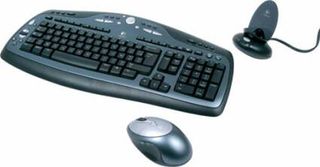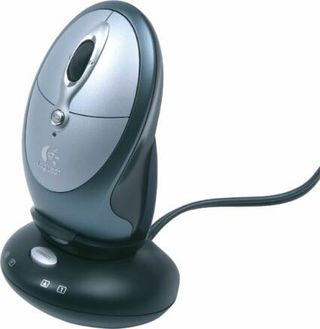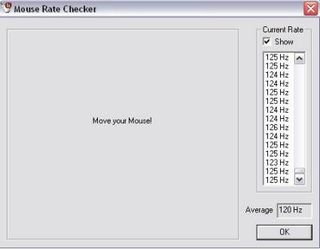Desktop Logitech LX: Comfort and Style
It's Time To Cut The Wires
Many users still resist the idea of cordless keyboards and mice, and newer device shapes specifically designed with comfort in mind. It's time to do away with the old prejudices about cordless technology and ergonomics.

Where cordless operation is concerned, gamers are the main holdbacks - they continue to believe firmly that latency time is not as good as with a corded mouse or keyboard. To address this, for its LX series, Logitech uses a technology called Fast RF. It uses the same frequency band as other wireless peripherals, 27 MHz, but takes full advantage of the bandwidth available at that frequency. This means that twice the amount of data can be sent, which means that coordinates can be refreshed twice as quickly.
The disadvantage of this is that the wider bandwidth is also more sensitive to external disturbances. Logitech has overcome that problem, however, and Fast RF transmission is never interrupted under normal use conditions. With the transmission speed of Fast RF, a mouse is capable of reporting its coordinates more than 125 times per second, compared to only 50 for a conventional cordless mouse. The significance of the number 125 is that it's the maximum speed possible with the USB connection; thus, there's no point in trying to increase it further.

You can see this limit yourself: simply download and install Mouserate and move your mouse. You'll see that a corded USB mouse can't beat the reporting frequency of a Fast RF cordless. Don't be surprised if the figures you see seem a little unbelievable at times; the program loses contact now and then. For those of you who are still convinced of the superiority of PS/2, see our article on the subject: Optical Mice: Microsoft and Logitech .

Stay on the Cutting Edge
Join the experts who read Tom's Hardware for the inside track on enthusiast PC tech news — and have for over 25 years. We'll send breaking news and in-depth reviews of CPUs, GPUs, AI, maker hardware and more straight to your inbox.
Most Popular

